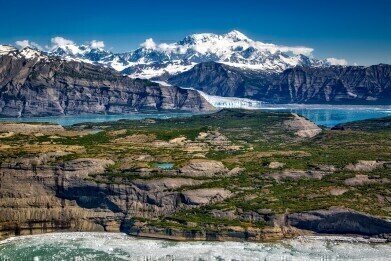News & Views
What is Permafrost?
Aug 26 2015
The world is developing an increasingly in-depth understanding about the dangers of climate change, and permafrost has been identified as a key player. But what exactly is the phenomenon? Read on as we explore the nitty gritty of the permafrost dilemma and what it means for our planet.
A brief overview
Put simply, permafrost refers to soil that has remained below temperatures of 0 degrees Celsius for over two years. The condition occurs is parts of the world where summer sunlight fails to penetrate the ground and annually thaw soil. Such climates are found in around 25% of the Earth’s total land surface, with Alaska, Canada and Siberia all experiencing high levels of permafrost. Depending on the severity of winter and the extent of summer sunlight, permafrost thickness can vary from as little as a few metres to as high as hundreds of metres.
Permafrost and global warming
As the world starts to warm up, soil temperatures are also increasing. This is evident in studies carried out in a variety of different permafrost zones across the globe. Using long-term borehole measurements scientists have found that permafrost layers are gradually thinning, and could disappear entirely if temperatures continue to rise.
For local populations and environments, permafrost can trigger some serious problems. These include damage to buildings and infrastructure, as well as an increase in greenhouse gas emissions? Why? Permafrost soils are hugely rich in organic carbon, with scientists estimating that the frozen earth currently contains around 1700 billion tonnes of the stuff. That equates to over 50% more than the total amount of carbon currently contained in the Earth’s atmosphere! While soil is frozen the carbon remains passive however as its starts to thaw microbial activity triggers the decomposition of organic matter, thus releasing huge amounts of carbon into the air. Unfortunately for the world, this spike in greenhouse gases only serves to intensify global warming. In turn this boosts the rate at which permafrost thaws and consequently releases even more carbon into the atmosphere. This is known as a positive feedback loop.
Scientists are keeping a close eye on permafrost conditions, and articles such as ‘Renowned Russian Research Institute Uses Thermal Imaging to Monitor Temperatures in Siberian Permafrost’ explore high profile projects. In Russia the Sergeev Institute of Environmental Geoscience is carrying out fundamental and applied research in environmental geoscience, engineering geology, hydrogeology and seismology. This includes the use of a FLIR T400 thermal imaging camera to track permafrost conditions when designing and monitoring the nation’s roads and railways.
Digital Edition
Lab Asia 31.2 April 2024
April 2024
In This Edition Chromatography Articles - Approaches to troubleshooting an SPE method for the analysis of oligonucleotides (pt i) - High-precision liquid flow processes demand full fluidic c...
View all digital editions
Events
Apr 28 2024 Montreal, Quebec, Canada
May 05 2024 Seville, Spain
InformEx Zone at CPhl North America
May 07 2024 Pennsylvania, PA, USA
May 14 2024 Oklahoma City, OK, USA
May 15 2024 Birmingham, UK


















